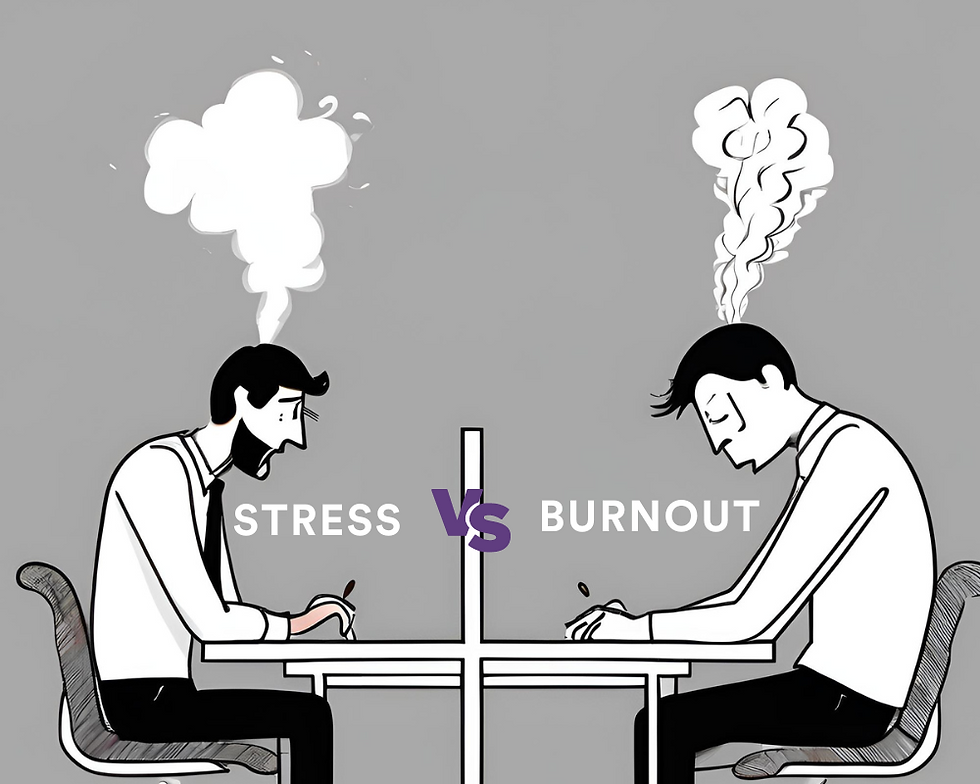Diaphragmatic Breathing for Stress Relief and Well-Being
- WuQi

- Nov 2, 2024
- 3 min read
Updated: Apr 30
Diaphragmatic breathing is a powerful technique that enhances respiratory efficiency and effectively manages stress. Its benefits extend to both emotional and physical well-being, making it an excellent tool for improving personal and professional outcomes. This guide consolidates essential concepts and practical exercises to help you harness the power of diaphragmatic breathing.
Key Concepts
Emotional and Physical Awareness
Identify personal stressors while acknowledging external expectations.
Emphasize self-acceptance; remember that your self-worth is not solely based on performance.
Biochemical Understanding
Diaphragm: The primary muscle for respiration, crucial for effective breathing.
Sternum (Pump Handle): Assists in chest elevation.
Ribs (Bucket Handle): Facilitates lateral expansion during inhalation.
Ensure diaphragmatic breathing involves a comprehensive expansion of both the abdomen and ribcage during inhalation and contraction during exhalation.
Correct Breathing Techniques
Prioritize the coordinated movement of the abdomen and ribcage; avoid the misconception that focuses solely on abdominal movement.
Aim for optimal lung filling and effective air expulsion through harmonized breathing patterns.
Coping with Stress
Utilize diaphragmatic breathing as a viable strategy for managing stress and anxiety, yielding both mental and physical benefits.
Practical Breathing Exercise
1. Positioning
- Sit comfortably or lie down flat to achieve a relaxed state.
2. Hand Placement
- Place one hand on your abdomen (just below the belly button) and the other on your chest to monitor movements during breathing.
3. Breathing Technique
- Inhale:
- Breathe slowly and quietly through your nose.
- Focus on allowing both your belly and ribcage to expand. Visualize your diaphragm descending and abdominal organs moving downward.
- Exhale:
- Exhale slowly and smoothly through your mouth, feeling the abdominal wall contract and ribcage return towards the center.
- Controlled Pause (optional):
- After exhaling, hold your breath briefly to increase CO₂ tolerance before the next inhale.
4. Key Aspect
- Both the abdomen and ribcage work together to ensure optimal lung filling during inhalation and efficient air expulsion during exhalation.
Key Aspects of Deep Breathing
Posture

Pelvic Alignment:
Tilt the pelvis forward and backward to identify the neutral position.
Spinal Curvature:
Round and extend the upper spine to discover the neutral curve.
Neck Position:
Tilt the neck forward and backward to find centre alignment.
Breathing

Awareness of the Pelvic Floor:
Cultivating awareness of the pelvic floor serves as a foundational element for deep diaphragmatic breathing. Consider the pelvic floor as the lower pressure container and the diaphragm as the upper.
360-Degree Expansion:
Allow your belly and chest to expand outward in all directions—front, back, and sides—during inhalation, promoting better lung capacity and oxygen exchange.
Upper Chest Engagement:
As you breathe, absorb air into the upper chest after filling the belly to encourage full lung use.
Mindfulness in Breathing
Focus on Dantiens:
Place attention on the lower dantien (elixir field) to ground energy and enhance awareness during breathing meditations.

Slight Pause for CO₂ Tolerance:
Incorporate a brief pause at the end of exhalation to improve CO₂ tolerance and enhance breath control.
Tongue on the Roof of the Mouth:
Keeping the tongue against the roof of your mouth promotes nasal breathing, which is quieter and facilitates relaxation.
Practical Tips for Integration
Comfortable Position: Begin by sitting or lying comfortably for relaxed breathing sessions.
Routine Practice: Establish a daily timer-based routine starting with a few minutes, incrementally increasing as you gain comfort.
Mindfulness: Notice bodily sensations during your breath cycles, allowing tension to dissipate naturally.
Applying Techniques in Daily Life: Integrate deep breathing methods during stressful moments or daily activities to foster resilience and enhance relaxation.
By regularly practicing these deep breathing techniques, you can develop a healthier mind-body connection, enhancing both mental well-being and physical performance over time.

Benefits of Deep Breathing
- Stress Reduction: Activates the relaxation response, lowering stress hormones and promoting calmness.
- Anxiety Management: Redirects focus from anxious thoughts, alleviating symptoms associated with anxiety.
- Improved Mental Clarity: Increased oxygen to the brain enhances cognitive function for better focus.
- Enhanced Physical Performance: Better oxygen exchange supports endurance and recovery.
- Regulation of Heart Rate: Slows the heart rate, promoting cardiovascular health and well-being.
- Alignment and Posture: Fosters awareness of alignment, contributing to better posture and musculoskeletal health.




Comments